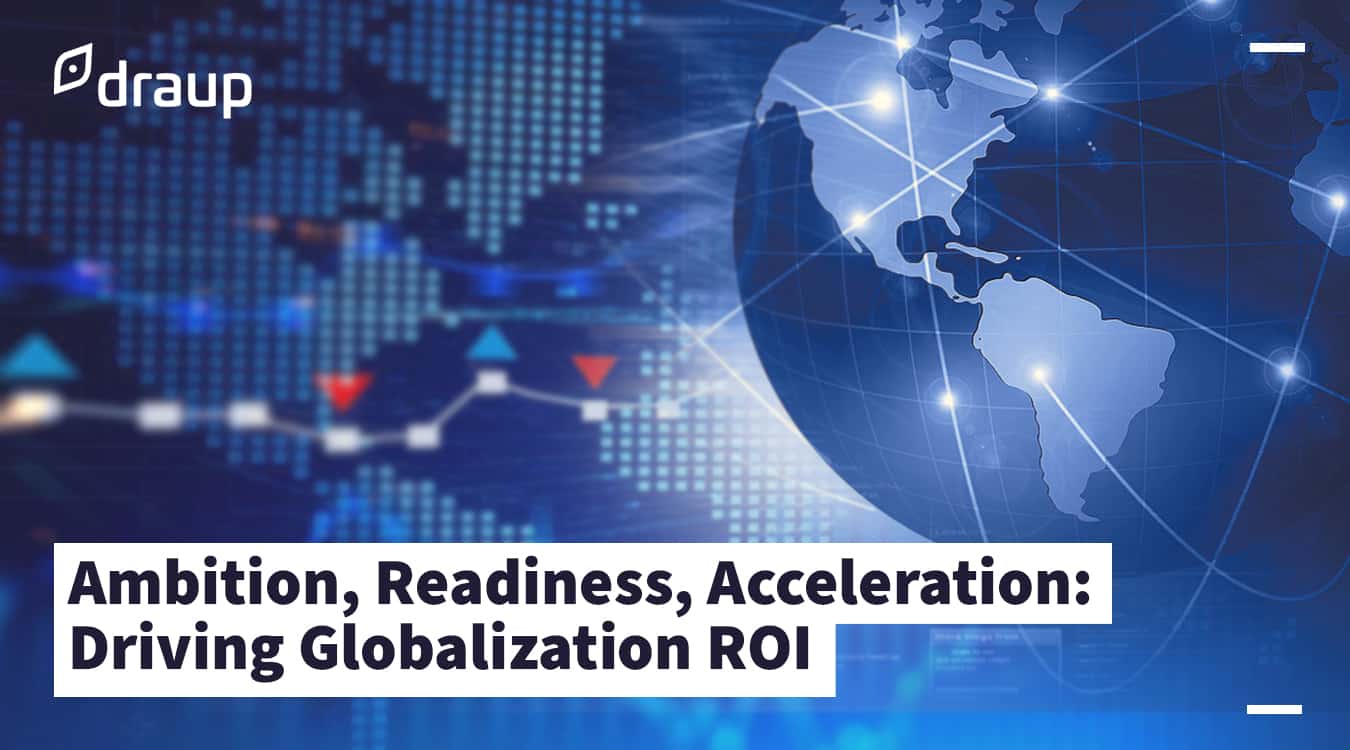“There are decades where nothing happens, and there are weeks where decades happen.“
Companies that have leveraged global talent through globalization and fostered a culture of continuous innovation have successfully driven digitalization and profitability. However, the ongoing pandemic has tested the mettle of even these forward-thinking organizations. To say the least, several newer dimensions of business continuity plans and disruption management are being tested by fire.
Clearly, what started out as global centers that are meant to drive innovation have now transformed into centers that can render a company disruption-proof in the face of monumental external stressors.
Vamsee Tirukkala, (CCO & Co-Founder) Draup, engaged in a fireside chat with Birgitta Finnander, (Head of R&D, France) Ericsson, and Dr. Edgar Hürfeld, (Managing Director & VP) Robert Bosch Technical and Business Solutions GmbH. They discussed the role of global centers in helping their respective companies come out of the pandemic relatively unscathed.
Agility Born Out Of Necessity
“The pandemic is pushing us to be more agile & adaptive,” says Ms. Finnander.
A few months before the pandemic, Ericsson had planned to set up a new R&D center in France. The pandemic, as expected, played spoilsport, though it did not completely derail their plans.
“We wanted to strengthen our position in Europe, to be closer to the customers and to the ecosystem. And, of course, the talent pool is an important thing here around. The reason for choosing France is its big market and the important customers here for us; it’s a great ecosystem. We wanted to focus on 5G and security for one, the areas where we see a lot of strengths in France.“
The plan went ahead, and the R&D center dedicated to 5G is operational, with the staff count slowly rising.
At Bosch, too, adaptiveness was the immediate reaction to regional lockdowns. Internal logistics teams scrambled to arrange for infrastructure transition and helping employees set up their new offices at their homes.
“We were also surprised to see that in our IT & IoT development centers, people were productive within a few days of working from home,“ Dr. Hürfeld remarks.
He credits this quick reaction to the investment that Bosch has been making into emerging technologies and their efforts in actively promoting changes to the internal work culture.
Global Centers As Key Drivers Of ROI
Dr. Hürfeld agrees with Ms. Finnander that by responding smartly, globalization’s march can carry on unhindered.
As his experience with setting up global centers for Bosch around the world shows, “if you invest in your centers with trust, with ability, with competence, then you will also harvest the return on this, which is much more than, being able to tap into local, resource hubs and at potentially lower costs than where your headquarters are.“
This statement further raises the question, “how do we measure ROI from a global center?“
Revenue & EBITA are a given. But more than that, Dr. Hürfeld advocates for measuring their effectiveness in terms of time–to–response, the number of centers of excellence they spawn, and how quickly they adapt to new technologies to meet the needs of various internal business units.
And these metrics will not change from center to center, adds Ms. Finnander. Value creation will remain the essence of every global center. How they achieve this value – whether by acting solely as an innovation hub or also as a center that responds quickly during disruption – is the only variable.
Globalization Challenges Still Remain
Despite all the advances in technology and the overall integrated point that global business is at presently, Dr. Hürfeld notes that culture & communication might still pose a challenge. This, he explains, is one pain point that remote working has not been able to solve.
The advancements in remote working, notwithstanding, both speakers agree that starting and running a global center is much easier with their foot on the ground in the host nation. The pandemic has exacerbating several existing challenges to globalization like regulatory compliance, worker exploitation & immigration challenges.
But the pandemic has also exposed the numerous advantages of having global centers at your disposal that can help your enterprise carry on with business as usual despite regional restrictions.
The fireside chat concluded with both parties noting how it is the younger generation that is keen to get back to office, socialize and get the ball rolling of hands-on projects that have taken a backseat.
The chat was held as part of the Zinnov Confluence – Europe Edition. View the complete chat here
***
Draup tracks real-time signals and maps enterprise global footprint by business function. With a holistic view on industry-wide digital intentions & ROI maps, Draup captures the shifting technological trends during times of disruption and delivers actionable insights for sales leaders to work with.







